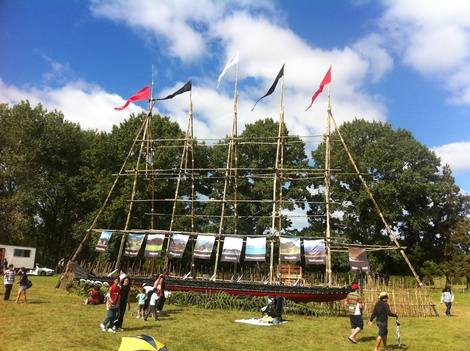Project Context


The Paparewa Teitei is a traditional form of Māori celebratory architecture, constructed primarily by Northland tribes but also with recorded instances in Tāmaki Makaurau. These structures were built to both store and display vast quantities of food for hui of up to 4000 people and were designed to demonstrate the wealth of the hosts through their ability to manāki such large groups of people.
The last known Paparewa Teitei (pictured) was built in 1849 at Kororāreka to celebrate peace in the North and the ‘Proclamation of the New Zealand Government’, which was attended by Governor Grey. It is a major feat of engineering, described as being 211 feet in length and up to 130 feet high at its highest point.
It is important to note that our historical descriptions and images of what pakeha referred to as ‘Hākari stages’ are filtered through a Western lens, creating versions of Māori histories biased towards notions of Western superiority, primitivism and exoticism.
In January 2012, Rau Hoskins led a team of 10 to build a Paparewa Teitei for the Ngāpuhi Festival to honour and celebrate the structures made by Ngāpuhi tupuna from ancient times up until the mid 1800s. Constructed of bamboo, the structure was half the height and length of the one built at Kororāreka.
In the construction of our contemporary Paparewa, the project team has endeavoured to respect and celebrate the past whilst also responding to and reflecting contemporary Māori stories and culture, maintaining core principles of purpose even in the modification (or even absence of) traditionally recognisable forms or materials.